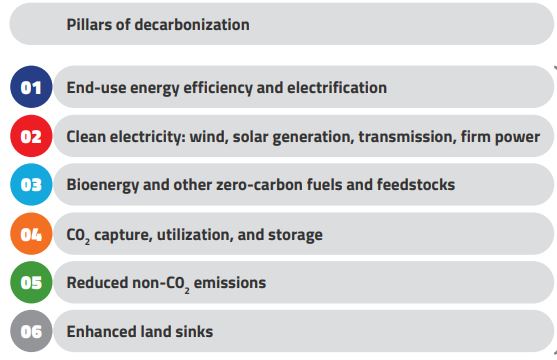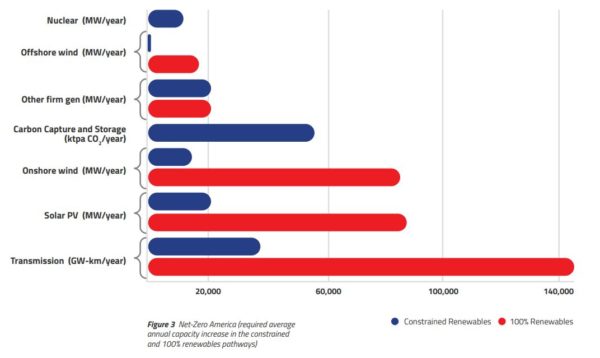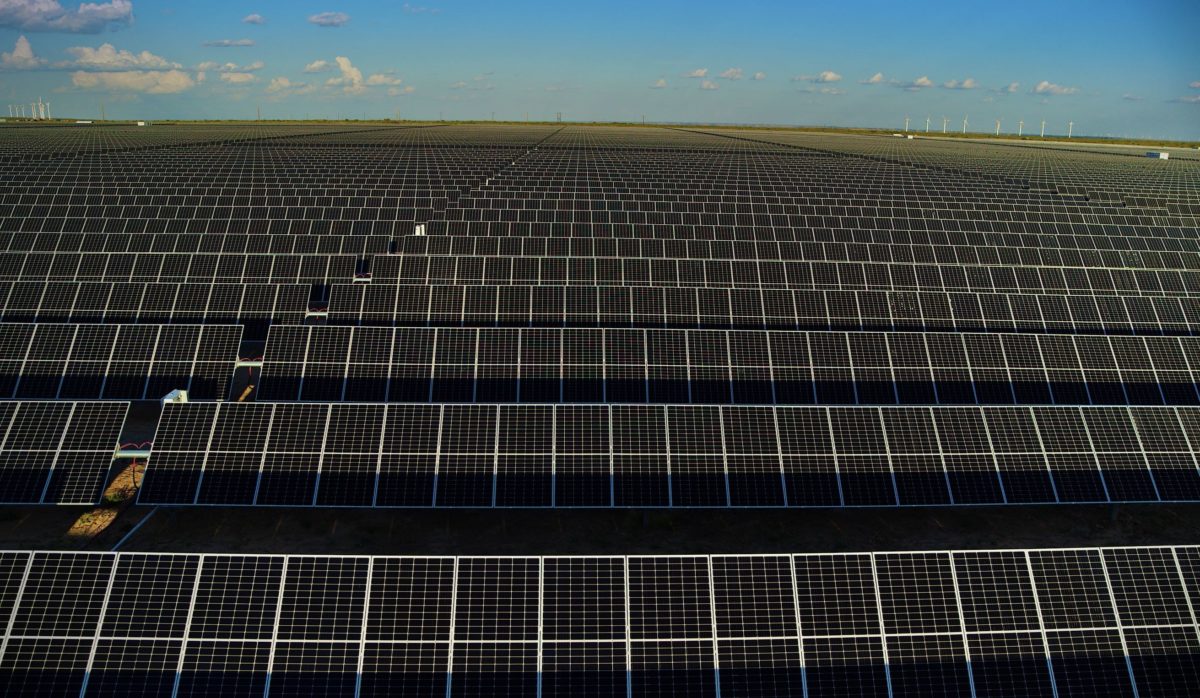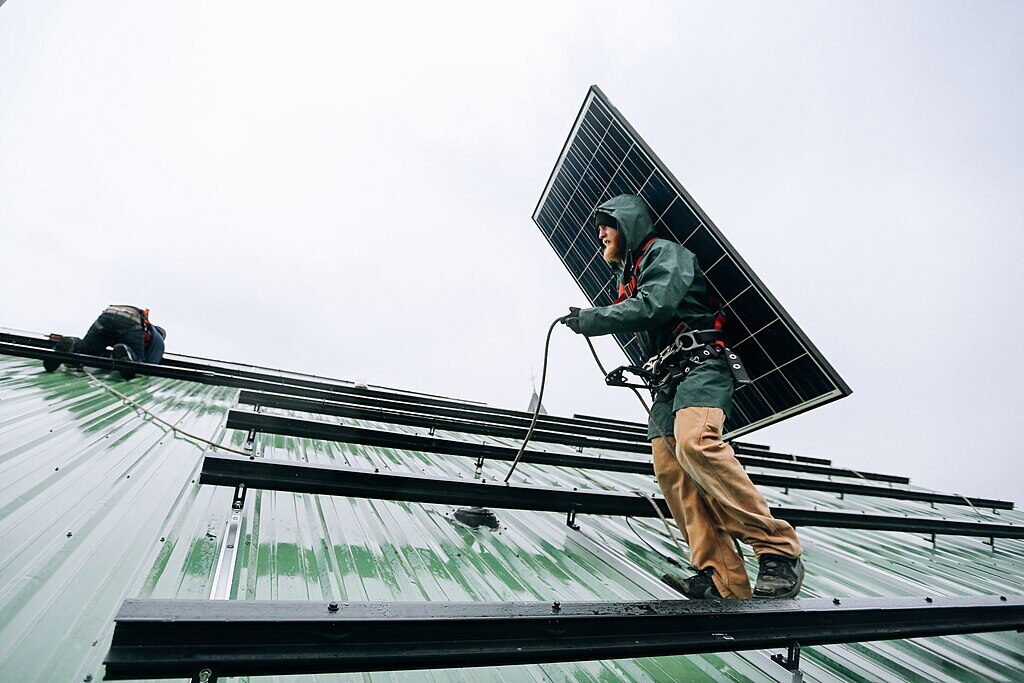The U.S. has a steep road ahead to reach net-zero carbon emissions by 2050. If solar is to decarbonize the energy system, it would need to add 800 MW of new capacity every week for 30 years, said a report by Worley and Princeton.
That much solar would require the land area of 260 Tokyo Olympic stadiums every week until 2050, said the report.
In modeled pathways towards net-zero, the report highlighted the need for a multi-front offensive on carbon emissions, with no single strategy able to achieve the goal alone.

Image: Princeton
Two scenarios were modeled: one that showed solar and wind growing at the 2020 rate for the next 30 years, called “constrained renewables”; and a 100% renewables path that ends fossil fuels entirely by 2050, and does not require the use of carbon storage.
Under the “constrained renewables” path, the U.S. is faced with installing 200 GW of solar power each year. The path would also require unprecedented amounts of carbon capture and storage (CCS) and nuclear power plants. The ask is difficult for electric power transmission, too, as the U.S. would need to outpace the current buildout of transmission corridors to deliver this newly integrated power.

The figure below estimates the amount of solar deployment necessary to achieve the 100% renewables model pathway. The dotted line represents the rate of the five strongest years of deployment across the U.S., and the solid line show the best five years for the entire world.

The report emphasizes a need for planning ahead and reducing project development times, especially in a pathway that uses carbon capture and nuclear, which take a long time to build. Solar PV demonstrated the shortest overall project timelines in both modeled pathways.
To prevent widespread “energy sprawl” for solar, wind, and transmission, the report looks to decentralized energy solutions. Rooftop and small-scale solar will be key to diminishing land use and the need for high-powered transmission lines. This, in concert with carbon storage, virtual power plants, and energy efficiency, can help protect lands from further development, the report said.
Worley and Princeton identified five shifts for the energy and carbon infrastructure to undergo for this vision to be realized:
- Broaden how value is defined: Projects must consider their environmental and social value, in addition to financial value, and stakeholders must be engaged in this valuation.
- Keep technology options open: Invest in the best available low-carbon technologies like solar and wind, and continue to develop new technologies like carbon capture and green hydrogen.
- Design one, build many: Standardize project design, and develop many projects in parallel. Work to streamline and reduce project times as much as possible.
- Communicate and collaborate: A more open flow of information is needed, industries must work with all and share risks, ideas, patents, and designs, using innovative contracts with transparent, auditable margins.
- Enable and monitor digitally: Digital technology will aid in visualizing project impacts performance, and provide greater transparency.
This content is protected by copyright and may not be reused. If you want to cooperate with us and would like to reuse some of our content, please contact: editors@pv-magazine.com.









So what this is telling us is that depending heavily on solar PV may not be the best way. Not only will you need all these acres of solar panels, but unless you only want to use your lights when the sun is shining, you will also need massive energy storage for this low capacity factor, intermittent power source. These days that storage device will likely be lithium-based batteries, which will compete for EV and other battery needs.
The DOE claims that there is 65 GW of untapped, high capacity factor hydro at small dams. Why aren’t we using this resource? Instead of using grid storage batteries why not use truly renewable pumped hydro for storage so as to not constrain battery production? What about dispatchable biomass? We need to employ all our renewable resources.